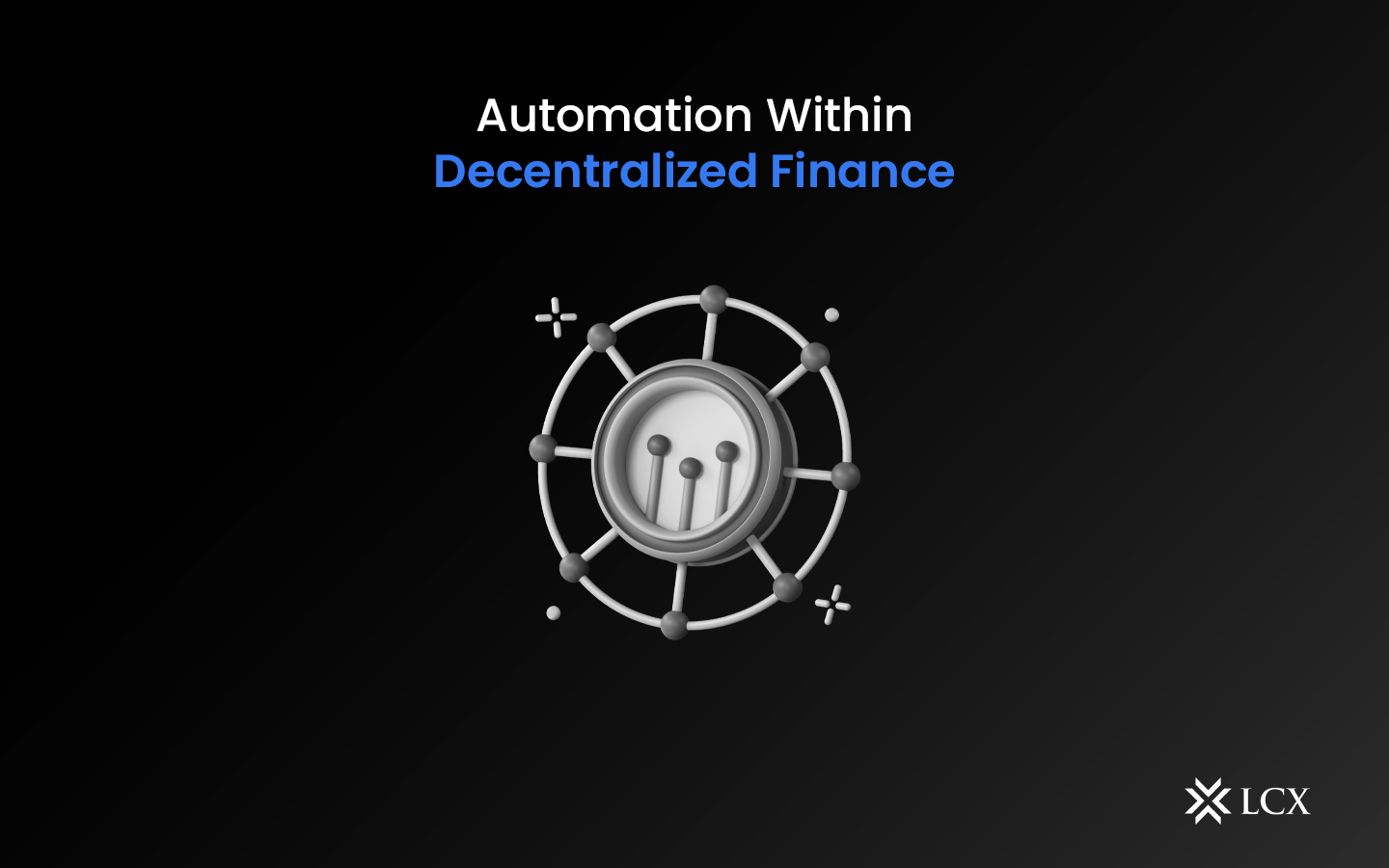Decentralized Finance or DeFi, an emerging financial technology, based on secure distributed ledgers, has gained significant traction lately. A race in decentralized finance is already well underway to usher in new innovations within the DeFi ecosystem. Both the established players and the upstart newcomers are in the running to revolutionize the industry.
With the evolution of blockchain technology, a plethora of services and products have sprung up to offer customers unique experiences. Some exchange platforms are already looking into launching automation and this concept is already gathering the attention of users worldwide within the DeFi world.
Check out LCX’s secure and safe DeFi terminal!
What is automation?
Automation is the use of bots to carry out software processes automatically. The bots can be referred to as “executors” or “keepers” and are part of the middleware infrastructure of the blockchain stack. Middleware infrastructure is the pillar that supports the blockchain ecosystem, allowing dapps (decentralized applications) to focus on developing core products that allow end users to interact seamlessly.
Missed out on the basics of DeFi? Check them out here!
Why is automation a game changer for DeFi?
Crypto enthusiasts make their biggest draws on DeFI with yields from farming and staking protocols. Since the yields constantly change, it is difficult to stay on top of things 24 hours a day. The concept of automation will reduce the process of manual compounding and grunt work on the part of the consumers.
Automation will enable the integration of multiple landing protocols and will provide users access to advanced management tools that will simplify the process of complex transactions. Users will be able to choose different integrated lending protocols, as per their choice to borrow, leverage, or yield farming.
What are the advantages of utilizing automation within DeFi?
Automation is a golden chance for cryptocurrency users to unlock what decentralized finance has to offer next with maximized efficiency and profit. The handy analytics offered by automation would be an apt replacement for the close scrutiny of one’s portfolio. Not only would the process generate higher annual returns for the traders, but it would also indubitably move assets to the highest APY sources available — irrespective of whether this involves a switch across trading pairs, pools, protocols, or blockchains.
To add to the list of benefits, automation would help users come up with better strategies and make better trading decisions. As a result, traders would be more likely to trust the market, and when market conditions are good, users’ exposure would go up.
As transparency is a key tenet of the service, the users can monitor the flow of their liquidity funds at any time. Some platforms are willing to integrate the stop loss option within the automation to help users feel secure and access traditional trading options developed fully on-chain in the DeFi spirit.
With such unique innovations that offer smart savings and a sense of security within the unregulated, decentralized world, the concept of automation strives to push the boundaries of DeFi to appeal to the broader masses and compete with traditional finance in a way that DeFi becomes an appealing alternative.
Check out the DeFi keywords used in this article here.
Conclusion
The ecosystem of decentralized finance is largely unregulated but with new innovations in the pipeline, a major transition toward DeFi is expected for crypto enthusiasts and the general masses alike. The DeFi’s current limitations are being challenged and defied and the crypto enthusiasts are here for it!










